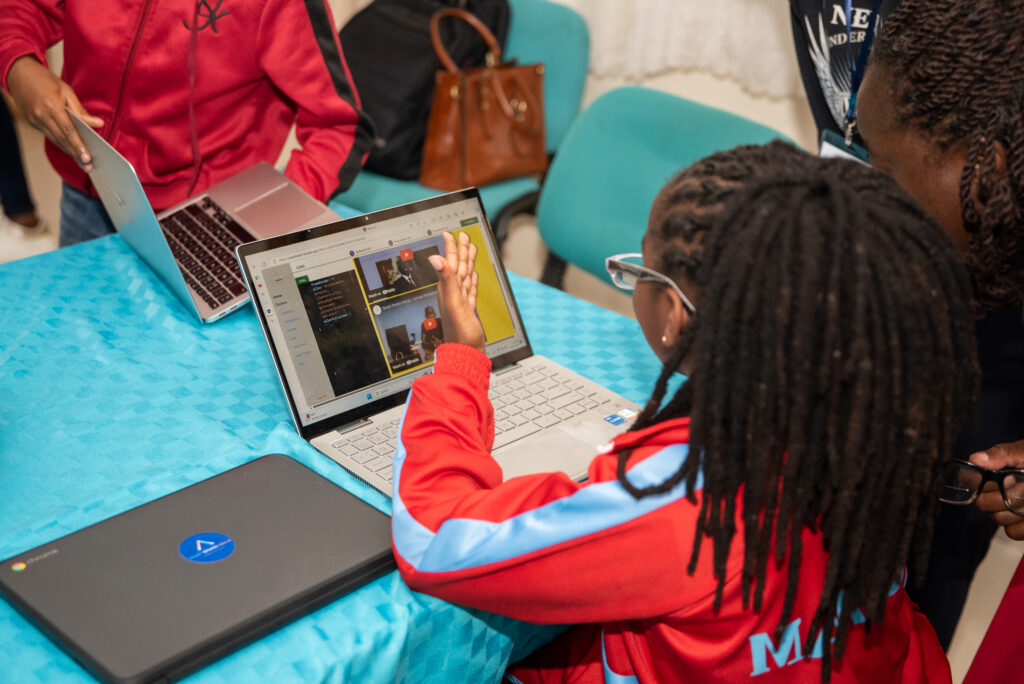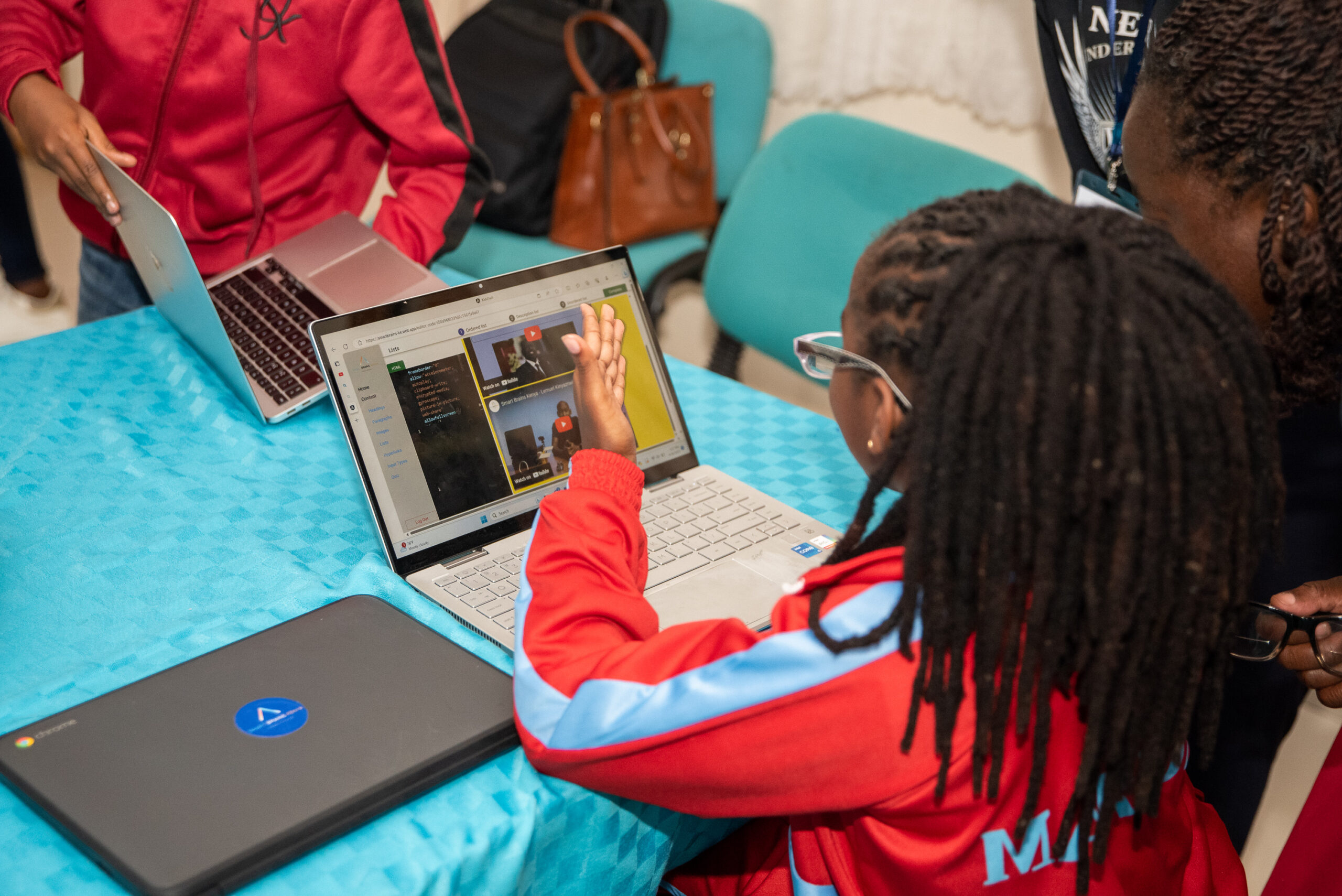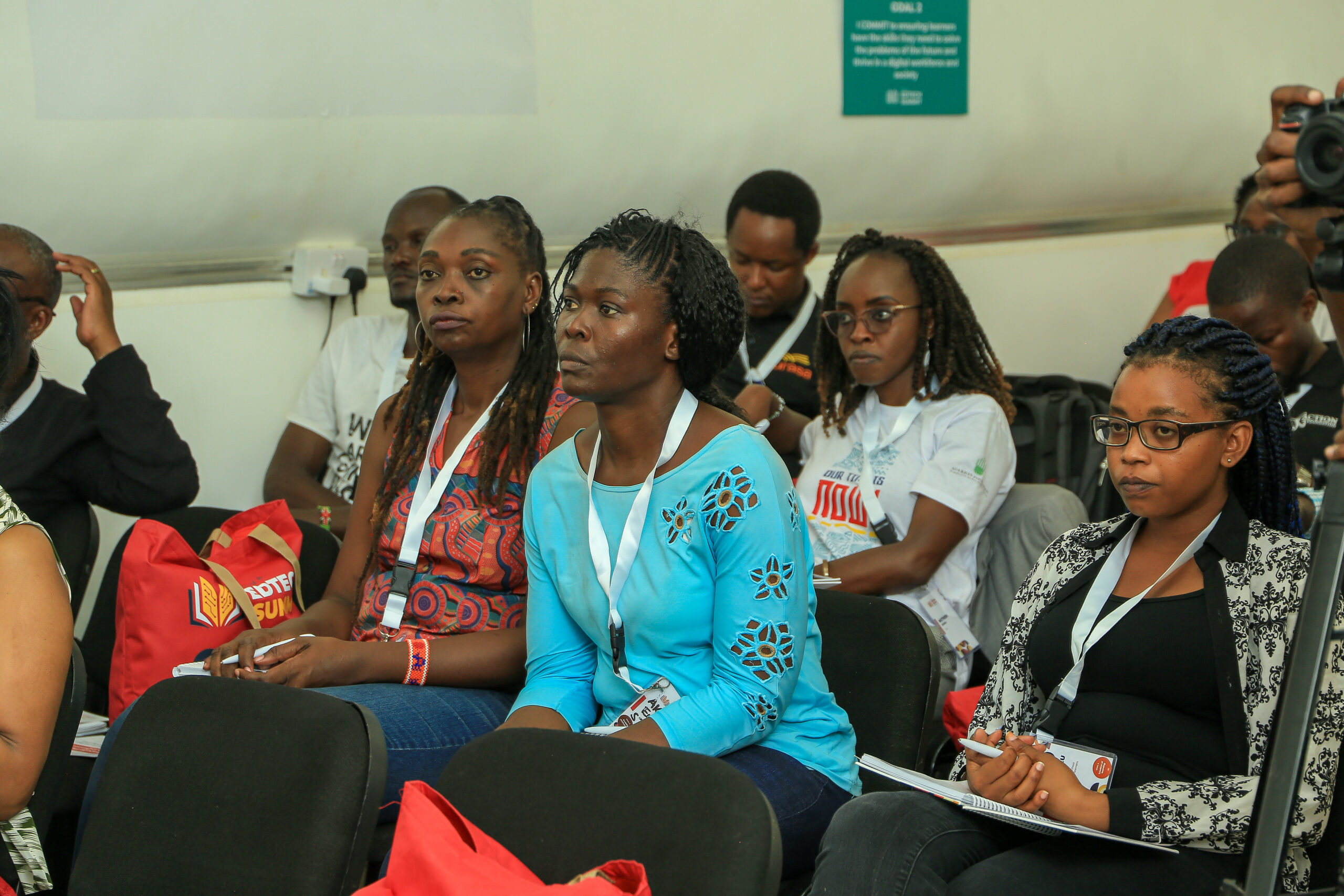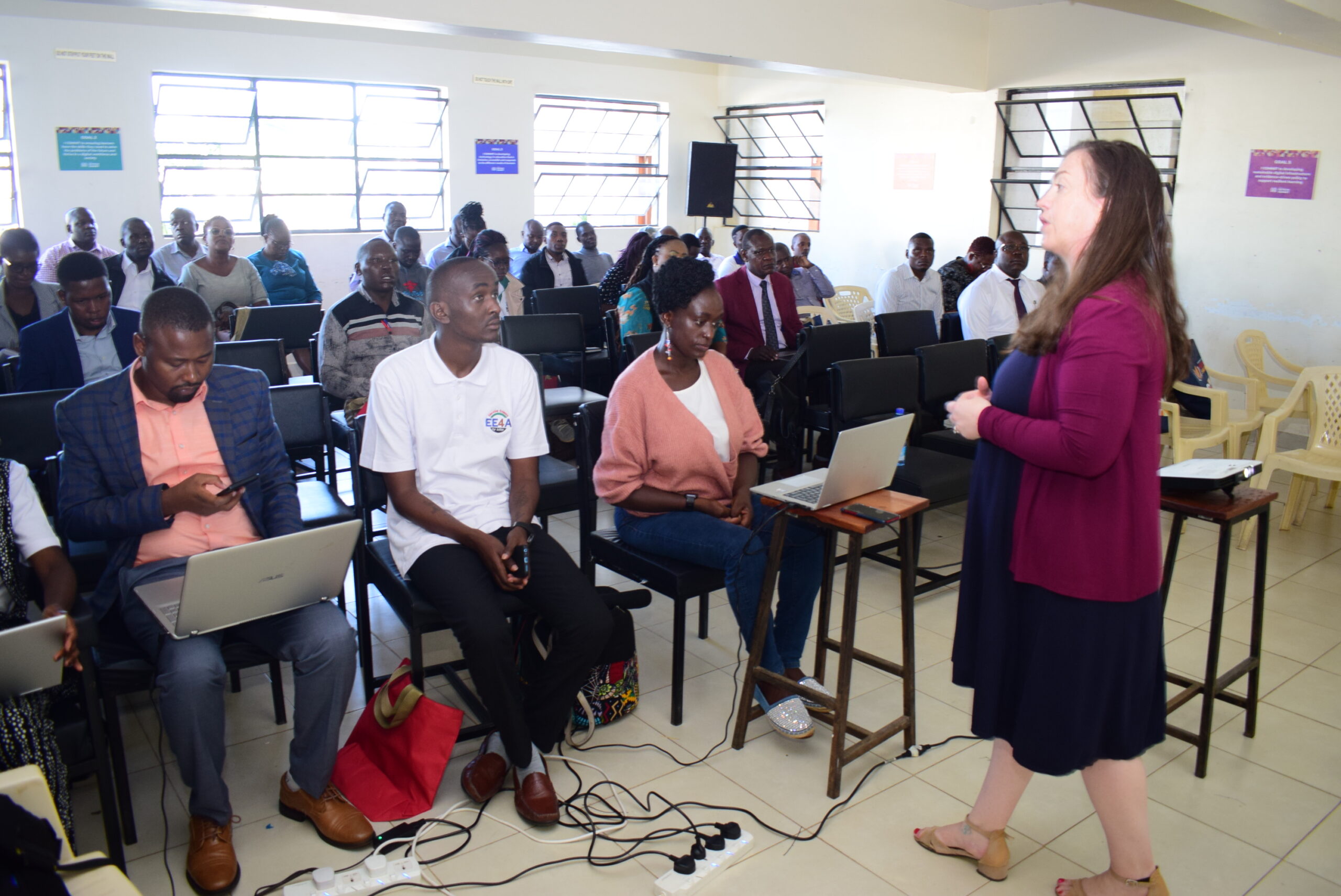The relationship between education and technology has improved swiftly, thereby paving the way for the emergence of educational technology. Coding (programming) is one of the 21st-century skills that was showcased by Lemuel Kinyanzwii, Mastercard Foundation EdTech Fellow, during the second edition of the Kenya EdTech Summit. Coding or computer programming can enhance the problem-solving capabilities of learners of all ages, therefore, necessitating the development of an educational programming environment for young learners.

Consequently, within the evolving digital world, where technology continues to revolutionize every facet of life, understanding and interacting with it is no longer just an advantage, it is a necessity. The reason the event co-creators had to ensure that conference participants had the opportunity to see live demo sessions. Smart Brains Kenya, an EdTech solution that empowers schools to conduct quality coding and robotics programs independently, showcased coding, once a specialized skill for tech enthusiasts, and how it has emerged as a crucial life skill, especially for children. According to Lemuel Kinyanzwii, the growing realization among educators is that teaching coding to children will not only make it easier for them to understand how information technology works but also give them a skill for life.
As new education models gain traction, discussions about how to incorporate programming skills and the “maker mindset” throughout the curriculum are influencing the incorporation of coding into the curriculum. This is with the appreciation that equipping children with coding skills from an early age empowers them to navigate the digital landscape effectively, fostering critical thinking, problem-solving, and creativity. This can be facilitated by the proliferation of computers, smartphones, and tablets which have become increasingly popular among children. Most children learn to use these electronic devices before they learn how to read and write. They become computer-literate at an early age.

Moreover, older children now realize the opportunities that maker space presents to them, however, maker mindset often requires some programming skills. This requires parents and teachers to encourage children to learn how to code so that they can understand how the technology works. A growing realization among educators is that teaching coding to children will give them a skill for life.
Essentially, coding involves breaking down complex problems into smaller, more manageable parts and devising a sequence of steps to solve them. This process cultivates logical thinking and sharpens problem-solving skills. Children learn to approach challenges systematically, a skill that is transferable to various aspects of life. Moreover, coding is a creative process that allows children to transform their imaginative ideas into reality. Whether they are building a game, story, or a website, coding sparks creativity and encourages out-of-the-box thinking. This creative aspect of coding is crucial for nurturing innovation, a quality that will be invaluable in their future careers and endeavors.
Besides, understanding how to code requires the ability to analyze a problem, identify patterns, and formulate efficient solutions. Children learn to think analytically, consider multiple approaches, and choose the best one. This analytical thinking carries over into their academic pursuits and daily decision-making. Consequently, a single line of code can significantly impact a program’s outcome. Thus, attention to detail is paramount in coding.
Children learn the importance of precision and accuracy, avoiding errors that can disrupt the desired functionality of their programs. What is more, within the ubiquitous world of technology, coding knowledge can significantly expand children’s future opportunities. Whether they choose a career in software development or not, coding proficiency is increasingly valued in various professions. It is a skill that sets them apart and enhances their employability giving them a competitive advantage.
Accordingly, as youth unemployment rates are high in most of the developed countries, computing skills would be the game changer to fill the “skills gap” between the number of technology jobs and the people qualified to fill them. As the “maker mindset” becomes more mainstream, the absence of such skills, especially coding, will prevent young people from connecting with people globally involved in a wide array of digital maker projects, such as robotics, artificial intelligence, and gamification.
Conclusively, coding for children is more than just a technical skill, it is a life skill that is a “maker mindset”. It enhances cognitive abilities, nurtures creativity, and prepares children for the future. Parents, educators, and policymakers should recognize the value of coding in children’s education and ensure that it is integrated into the curriculum and extracurricular activities. By doing so, we empower our children to thrive in an increasingly digital and technology-driven world.
Coding as a life skill for children
The relationship between education and technology has improved swiftly, thereby paving the way for the emergence of educational technology. Coding (programming) is one of the 21st-century skills that was showcased by Lemuel Kinyanzwii, Mastercard Foundation EdTech Fellow, during the second edition of the EdTech Summit. Coding or computer programming can enhance the problem-solving capabilities of learners of all ages, therefore, necessitating the development of an educational programming environment for young learners.
Consequently, within the evolving digital world, where technology continues to revolutionize every facet of life, understanding and interacting with it is no longer just an advantage, it is a necessity. The reason live demo sessions were included in the two-day event sponsored by Mastercard Foundation. Smart Brains Kenya, an EdTech solution that empowers schools to conduct quality coding and robotics programmes independently, showcased coding, once a specialized skill for tech enthusiasts, and how it has emerged as a crucial life skill, especially for children. According to Lemuel Kinyanzwii, the growing realization among educators is that teaching coding to children will not only make it easier for them to understand how information technology works but also give them a skill for life.
As new education models gain traction, discussions about how to incorporate programming skills and the “maker mindset” throughout the curriculum are influencing the incorporation of coding into the curriculum. This is with the appreciation that equipping children with coding skills from an early age empowers them to navigate the digital landscape effectively, fostering critical thinking, problem-solving, and creativity. This can be facilitated by the proliferation of computers, smartphones, and tablets which have become increasingly popular among children. Most children learn to use these electronic devices before they learn how to read and write. They become computer-literate at an early age.
Moreover, older children now realize the opportunities that maker space presents to them, however, maker mindset often requires some programming skills. This requires parents and teachers to encourage children to learn how to code so that they can understand how the technology works. A growing realization among educators is that teaching coding to children will give them a skill for life.
Essentially, coding involves breaking down complex problems into smaller, more manageable parts and devising a sequence of steps to solve them. This process cultivates logical thinking and sharpens problem-solving skills. Children learn to approach challenges systematically, a skill that is transferable to various aspects of life. Moreover, coding is a creative process that allows children to transform their imaginative ideas into reality. Whether they are building a game, story, or a website, coding sparks creativity and encourages out-of-the-box thinking. This creative aspect of coding is crucial for nurturing innovation, a quality that will be invaluable in their future careers and endeavors.
Besides, understanding how to code requires the ability to analyze a problem, identify patterns, and formulate efficient solutions. Children learn to think analytically, consider multiple approaches, and choose the best one. This analytical thinking carries over into their academic pursuits and daily decision-making. Consequently, a single line of code can significantly impact a program’s outcome. Thus, attention to detail is paramount in coding.
Children learn the importance of precision and accuracy, avoiding errors that can disrupt the desired functionality of their programs. What is more, within the ubiquitous world of technology, coding knowledge can significantly expand children’s future opportunities. Whether they choose a career in software development or not, coding proficiency is increasingly valued in various professions. It is a skill that sets them apart and enhances their employability giving them a competitive advantage.
Accordingly, as youth unemployment rates are high in most of the developed countries, computing skills would be the game changer to fill the “skills gap” between the number of technology jobs and the people qualified to fill them. As the “maker mindset” becomes more mainstream, the absence of such skills, especially coding, will prevent young people from connecting with people globally involved in a wide array of digital maker projects, such as robotics, artificial intelligence, and gamification.
Conclusively, coding for children is more than just a technical skill, it is a life skill that is a “maker mindset”. It enhances cognitive abilities, nurtures creativity, and prepares children for the future. Parents, educators, and policymakers should recognize the value of coding in children’s education and ensure that it is integrated into the curriculum and extracurricular activities. By doing so, we empower our children to thrive in an increasingly digital and technology-driven world.



